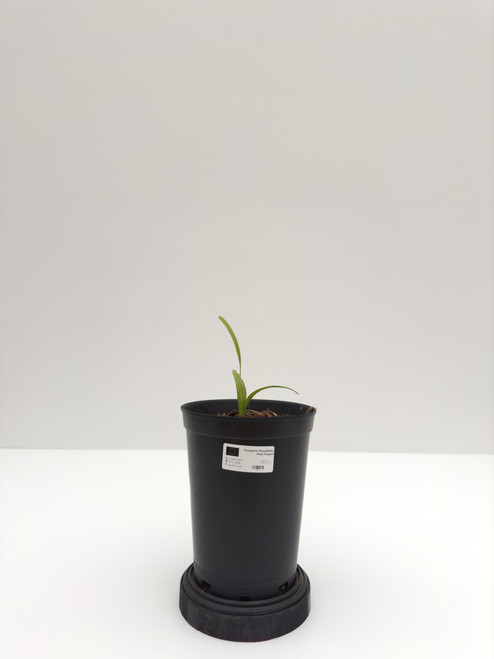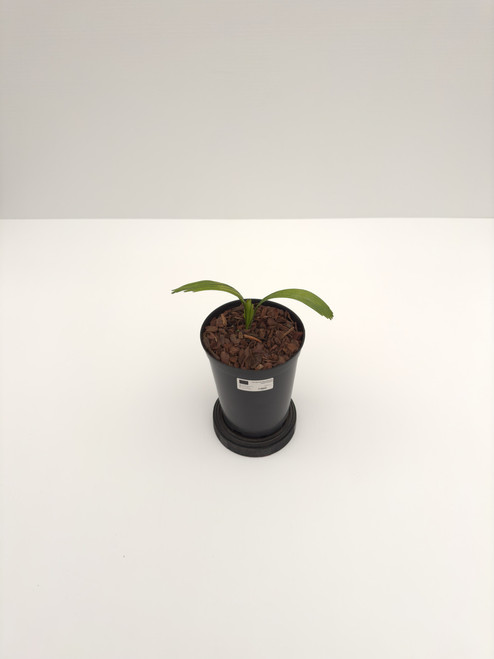Product Description
Habitat and Distribution
Vanuatu, on the islands of Vanua Lava (in littoral forest at sealevel on volcanic soils) and Malekula (in rainforest to 250 m above sea level on volcanic soils). Endemic. (John L. Dowe 1993)Description
Stem solitary, erect to slightly reclining, to 5 m tall, to 8 cm in diam., portion below leaves retaining decaying leaf-bases, proximal portion smooth, light brown,/gray. Leaves to 12 in a loose crown; petiole very long and thin, to 3 m long to I cm wide in distal portion, irregular marginal spines only at the base; leaf-blade segmented; segments to 12, symmetrically arranged, central segment twice or more times broader than lateral segments which become progressively narrower toward the leaf margins, all segments slightly pendulous. Inflorescence interfoliar, pendulous, to 1.8 m long, five once-branched branches; bracts subtending primary and seiondary branches tubular, remaining green during fruit development and maturity. Flowers pedicellate, single, spirally arranged, sepals fused to one-third their length, apex rounded, to 12 mm long, petals fused badally, apex valvate, pointed to 4 mm Iong. Fruit yellow,/orange when ripe, globose, to l0 mm in diam.; endocarp brittle with few longitudinal ridges. Seed to 6 mm in diam., testa intruding into endosperm below the raphe. Eophyll plicate, Ieaf dividing early. (John L. Dowe 1993) Editing by edric.
Culture
Tropical Moist Forest, Cold Hardiness Zone: 10b
Comments and Curiosities
Etymology: Licuala cabalionii is named for Pierre Cabalion (born 1947), French ethnopharmacologist whose work in Vanuatu has been an important contribution to the Flora of Vanuatu Project. (John L. Dowe 1993)
A medium-sized fan palm native to the islands of Vanua Lava and Malekula, Vanuatu, in the South West Pacific, where it forms dense populations at low elevations in littoral forest and rainforest respectively. It grows a slender, solitary trunk to about 5 m tall which holds a spreading crown of large, circular fan leaves that are split to the base into several broad, wedge-shaped segments. (RPS.com)

















